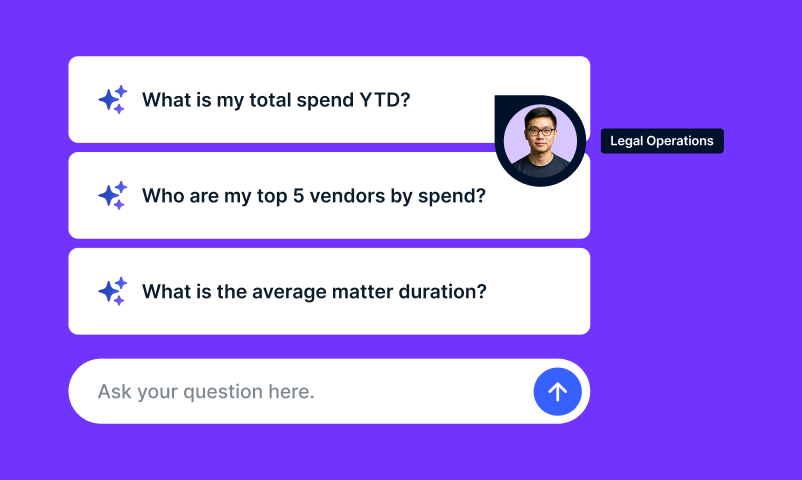This article is the second of our four-part blog series focusing solely on matter management and various aspects. If you have not yet read the first article, click here to catch up. In part two, we will focus on the question of how full-suite digital matter management platforms help to optimize and streamline the management of legal matters.
In short, the answer is simple: If we take the core components of a matter, then we can easily deduce the benefits and efficiencies that matter management systems provide for legal departments. This boils down to:
1. Central and Secure Document Management
Matter management systems centralize document storage for matters and provide a secure location where important matter documents can be accessed. Essential document management functionality is normally present, including versioning, redlining, custom metadata, tagging, granular permissioning, etc. Integrations with MS Office and Google Workspace are often available, making editing and collaborating on documents quick and easy. Matter management tools also make it simple for documents and their content to be searched and found. Some matter management systems also offer specific contract management capabilities, such as e-signature integration and clause extraction for contract-related matters.
2. Discoverable Know-How
One benefit of managing matters in a single system is that all matter-related information and knowledge is collated in one location, a single source of truth. It also gives structure and taxonomy to that data. Good matter management systems harness this data and make know-how searchable and easily available in context when needed. Some matter management systems are actually utilizing AI to simplify and support knowledge delivery, connect data, help keep it up to date, and put it into context. Some matter management platforms leverage integrations with other systems to centralize data and make multiple sources searchable; others also embed chatbots and decision automation tools to deliver answers to specific questions and circumstances rather than just search results.
3. Efficient Communication and Collaboration
Following the pandemic and the rise in remote working, the best matter management platforms will now integrate with market-leading collaboration tools such as MS Teams. Good matter management platforms will also be systems of engagement (not just systems of record), enabling users from both within and outside the organization to collaborate on the delivery of matters. This is particularly helpful when legal teams are working with outside counsel. Communication should also be possible within the matter management platform, with social collaboration functionality like messaging, comments, and sharing. We are seeing a trend towards the “meet users where they work” model, so expect to see matter management tools integrating with more personal productivity and collaboration tools in the future.
4. Automated Workflows and Self-Service
Automating standardized workflows and reducing manual intervention is the key to making any legal process more efficient. Therefore, matter management platforms often provide workflow automation functionality. Process automation can range from standardized and fixed to fully configurable (often known as no-code automation). It can be used to optimize a wide range of matter processes, including notifications, legal intake, document automation, approval processes, risk escalation mechanisms, and contract lifecycles, to name just a few. One key benefit of automation is that it unlocks greater self-service. Legal teams are busy enough, so the more they can enable others to help themselves, the more they can focus on higher-value work. Matter management platforms are therefore being used to enable stakeholders within the business to instruct the legal team, generate their own documents, and access relevant guidance and know-how.
5. Clear Organization of Work
Delivering a legal matter involves the intricate coordination and management of resources, status, and risk to ensure delivery of the matter on time and on budget. Matter management systems often include tools to help with planning, resource allocation, and scheduling. From task management, work allocation, and project plans to capacity trackers, team calendars, and timelines – matter management tools help map the work necessary for the delivery of the legal matter and support the management of the resource to ensure proper execution of that matter. In some cases, matter management platforms will also include time-tracking features to enable legal teams to record the time they spend working on matters. However, project management isn’t just about resources, it’s about monitoring status changes, tracking risk, and ensuring transparent reporting. Matter management tools, therefore, provide tools that ensure complete transparency over matter activity.
6. Transparent Spend Management
While many matters are dealt with in-house, a large proportion still require the support and input of outside counsel. Full-suite matter management tools often provide the functionality to help source legal service providers, create budgets, track spend, review invoices, enforce billing guidelines and run approval processes. Since spend is such a large element of any legal matter, it makes sense for spend management to form part of broader matter management systems – after all, it’s possible to derive more valuable insight when spend data is layered against other matter data. For example, comparing a law firm’s spend with its cycle times and outcomes can help determine whether a legal department sees value in its legal service providers.
7. Access to Data
The more matter activity conducted within matter management systems, the more useful data they hold. Whether the data relates to spend, status, resourcing, contracts, risk, or legal intake – it’s important to ensure that the data can be properly accessed and interrogated and that insights can be delivered quickly. Many matter management systems provide sophisticated reporting and analysis tools that enable matter data to be filtered and extracted. Alternatively, data can be visualized in charts and graphs within reporting dashboards or via connectors with tools such as Power BI. It’s important to note that many matter management systems go beyond simple reporting and now use data to predict future outcomes and spot trends.
Putting it Into Practice
Matter management is a broad discipline that involves the efficient coordination and delivery of all aspects of a legal matter. Optimizing the matter management process is critical in the current landscape but may seem daunting given the scope of many legal matters; however, there are significant gains to be made by deploying technology solutions to streamline and support the management of legal matters. Instead of trying to stitch together different tech tools, look for full-suite matter management platforms that can enhance the entire matter lifecycle. These tools will help you start small but will provide the foundation for your team to scale into an organized, productive, and informed legal function!
Read Part III of this series: 7 Aspects In-House Teams Should Consider When Choosing a Matter Management Vendor.




